Large Italian Still Life Attributed to Sebastiano Ceccarini, Antique Original Oil Painting, 18th Century


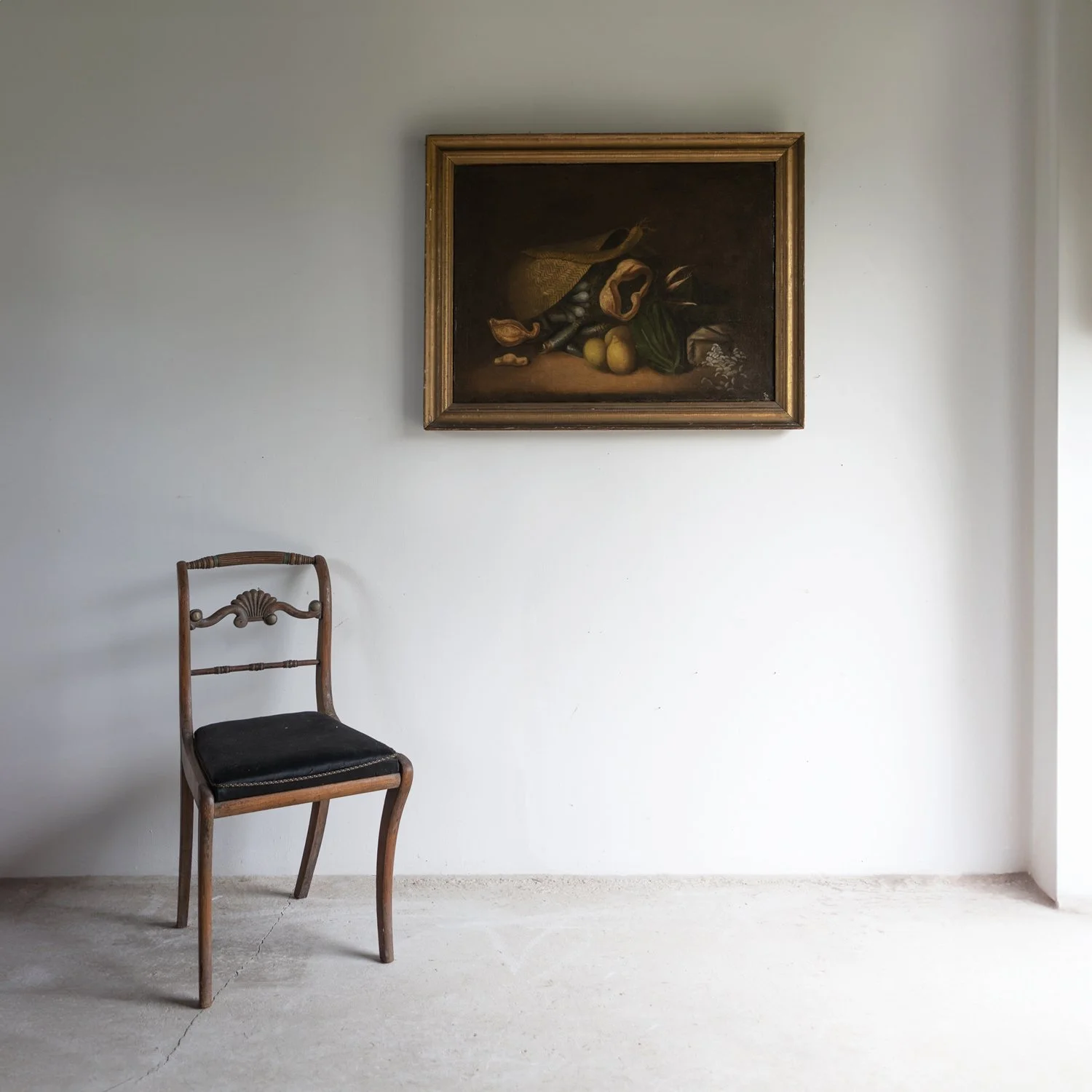


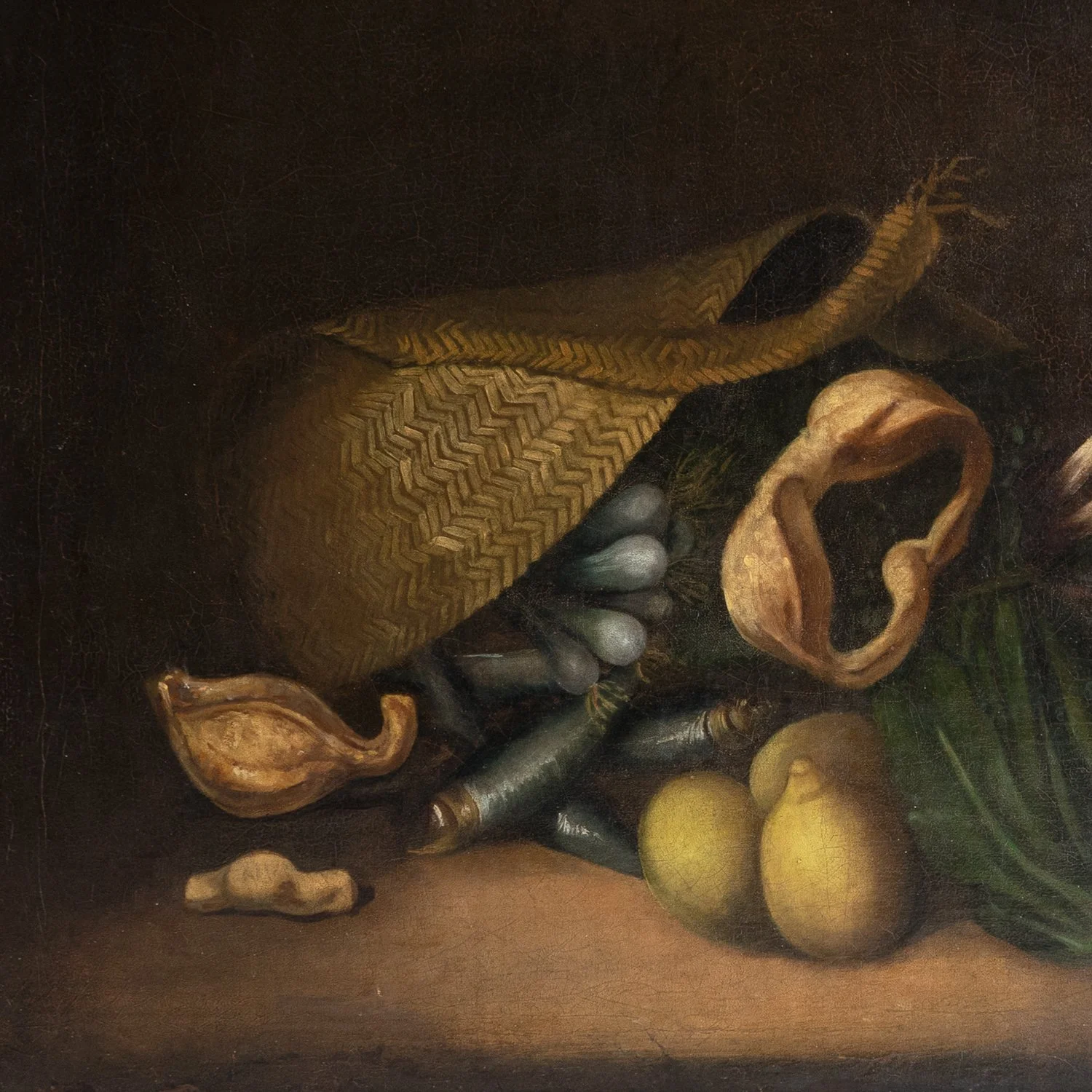
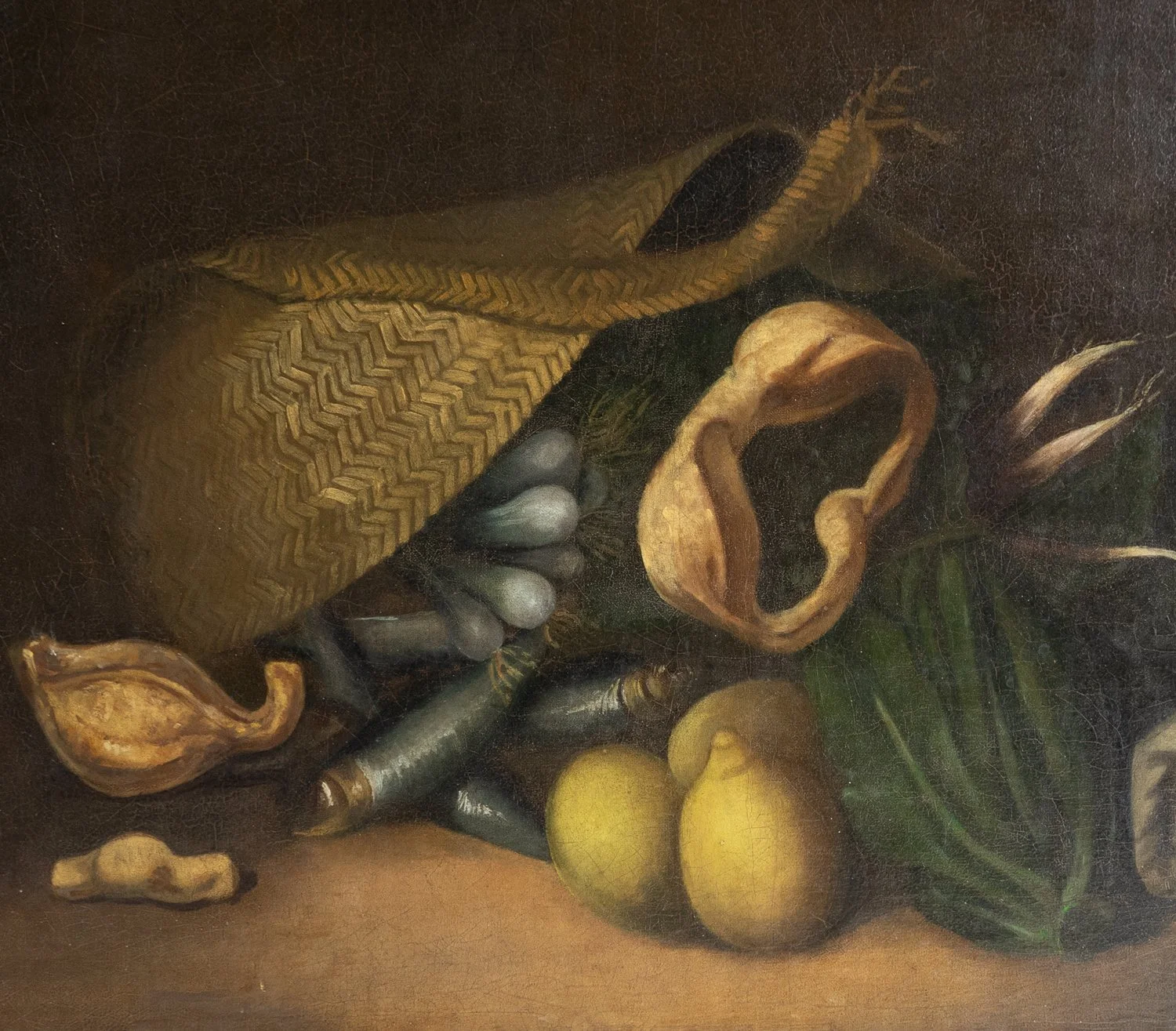
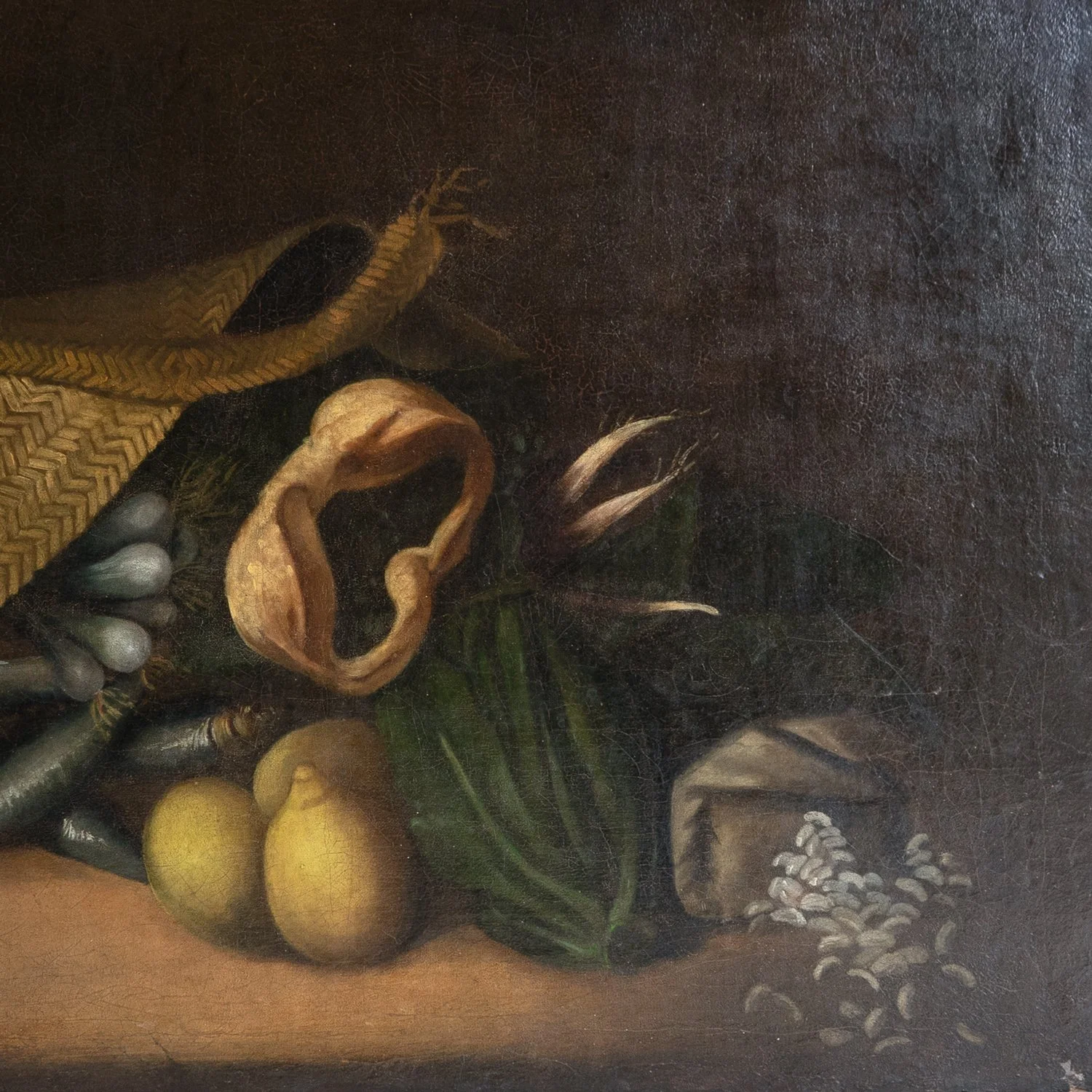

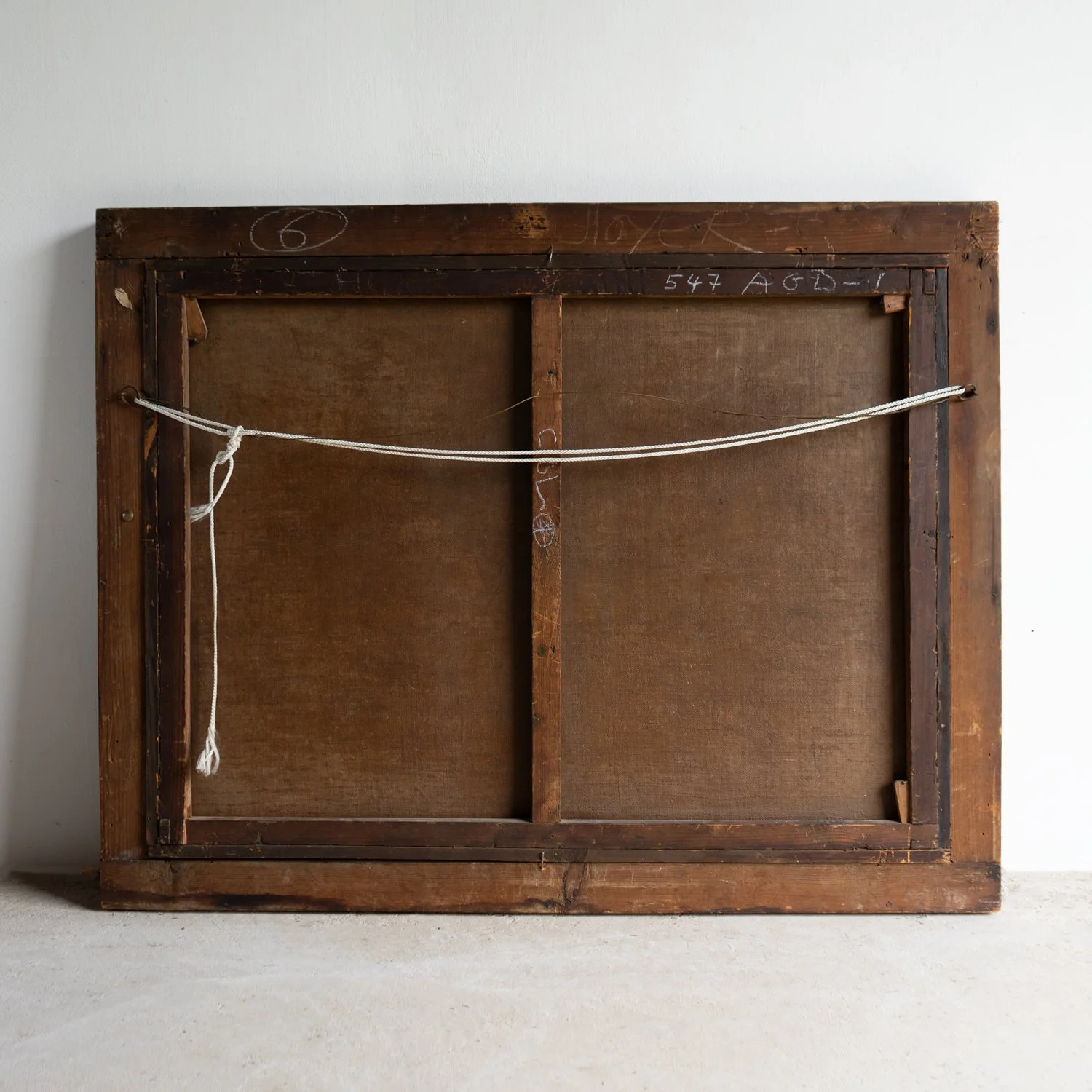
Large Italian Still Life Attributed to Sebastiano Ceccarini, Antique Original Oil Painting, 18th Century
Antique Original Oil on Canvas Painting Depicting a Basket of Ingredients
Depicting a basket with a frayed handle, which has been emptied onto a kitchen table. The basket is full of a wealth of ingredients, probably picked up at the market, potentially to make some kind of hearty Mediterranean stew. There are sardines, lemons, beans, spring onions, squash and greens. The kitchen is dimly lit and atmospheric.
The painting is unsigned, as is typical of the age, but has been attributed to Sebastiano Ceccarini (1703-1783). Ceccarini was an Italian Baroque Old Master painter, mainly known for his portraits, but also painted still life.
For reference, please see ‘Natura morta con grosso pesce, cipolle novelle, sporta con rape e altra sporta con pesci’, in the collection of the Cari Fano Foundation in Fano, as well as ‘Natura morta con cesta, brocche, aglio e zucche’ that sold at auction with Wannenes Genoa on 21st September 2021 for €4,000 under the hammer.
Sebastiano Ceccarini (1703-1783) was an Italian Baroque painter. He was a pupil of Francesco Mancini and a teacher of his nephew Carlo Magini. He painted in Rome during the papacy of Pope Clement XII, painting an altarpiece for a chapel in the Quirinal, belonging to the Swiss. Another of his well-known and praised works is the painting of an altarpiece, depicting the Madonna and Child with St. Francis and St. Sebastian and the Castle of Mondolfo in the background, for the church of St. Sebastian in Mondolfo.
A rough translation from the Wannenes auction catalogue regarding Ceccarini as a still life painter - ‘Sebastiano Ceccarini was an important still life painter, certainly the leading exponent of this unique genre in the Marche region. His works reflect the influence of the Romagna painting of Resani and Levoli, but are executed with a severe formal austerity and, unlike his portraits and religious works, with an anti-academic sensibility and entirely uninfluenced by rococo influences. The refined archaism with which the depicted objects are described and arranged is therefore striking, marked by a Caravaggesque luminosity that suggests an allegorical meaning, where simplicity predominates, unlike the exuberant banquet tables of Rome and Naples. In our case, the artist paints a true meditation on space and a rigorous observation of reality, achieving an extraordinarily effective result, which foreshadows the achievements of his pupil Carlo Magini for the conceptual modernity of the layout, which finds comparisons with the Kitchen Tables known to us’ (see MM Paolini and B. Cleri, in L'anima e le cose. La natura morta nell'Italia pontificia nel XVII e XVIII secolo, exhibition catalogue edited by R. Battistini, B. Cleri, C. Giardini, E. Negro and N. Roio, Modena 2001, pp. 153; 156, nn. 79; 86).
The work offered by us probably dates from the mid-18th century.
It is framed in its original deep-set gilt frame.
Overall, the painting is in good original vintage condition. There is some wear commensurate with age, including some minor losses and craquelure throughout. The painting could possibly be cleaned is so desired which would probably bring out some vibrancy and more luminosity, which the artist is known for, but as a decorative piece, we like it as it is, a somewhat duller, aged painting with a dusty quality to it. The frame is also largely in good vintage order. There are some minor losses to the gilt gesso, and again, the gilding has an aged, duller finish to it rather than being bright or shiny gold.
Overall approximate measurements: 97cm x 76cm x 5cm. The canvas measures 86cm x 65cm.
Delivery is £45 to the Mainland UK. If you live elsewhere, please get in touch for an accurate quote. The shipping will automatically be added at checkout unless you select collection.
